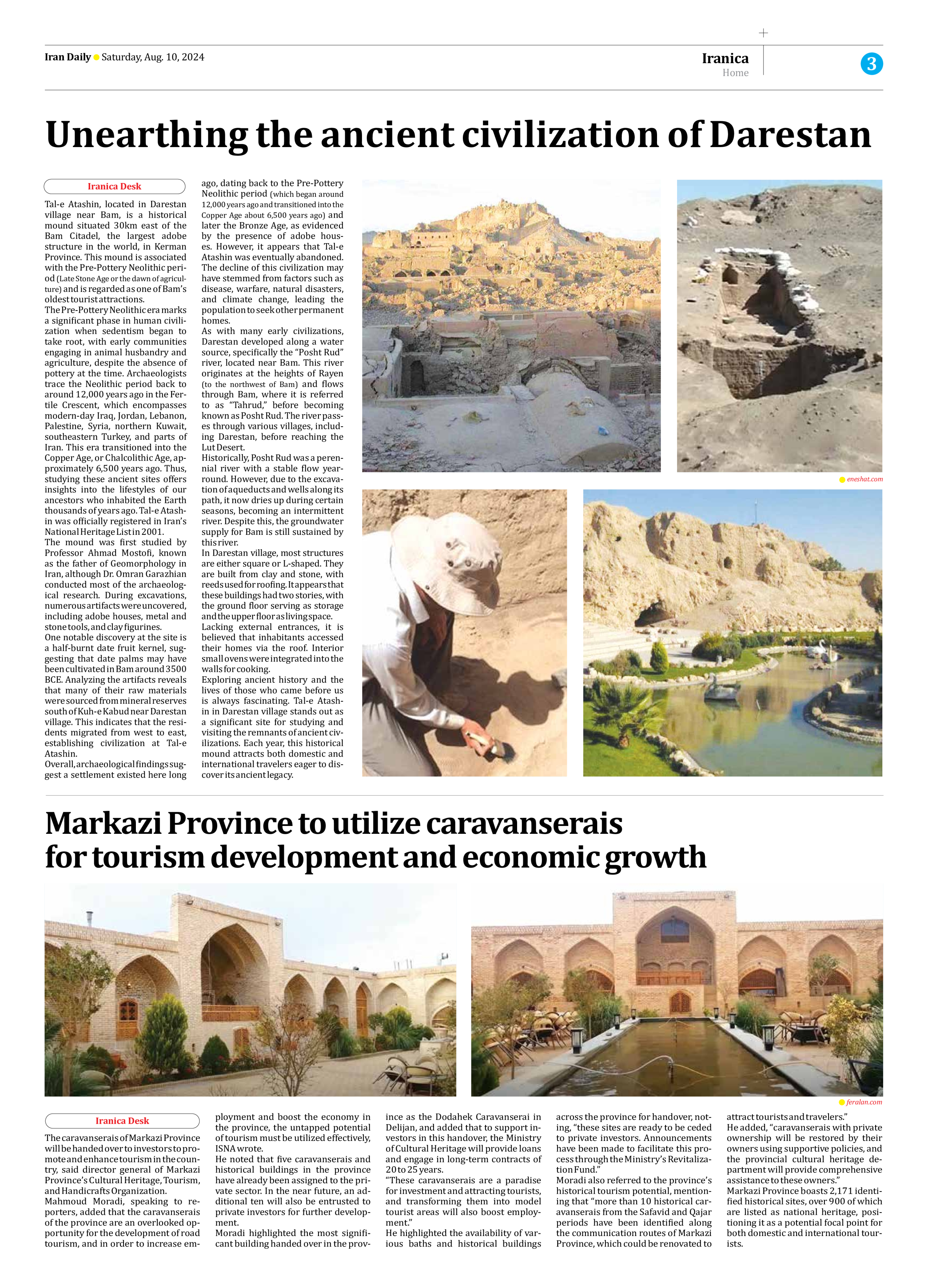
Unearthing the ancient civilization of Darestan
Tal-e Atashin, located in Darestan village near Bam, is a historical mound situated 30km east of the Bam Citadel, the largest adobe structure in the world, in Kerman Province. This mound is associated with the Pre-Pottery Neolithic period (Late Stone Age or the dawn of agriculture) and is regarded as one of Bam’s oldest tourist attractions.
The Pre-Pottery Neolithic era marks a significant phase in human civilization when sedentism began to take root, with early communities engaging in animal husbandry and agriculture, despite the absence of pottery at the time. Archaeologists trace the Neolithic period back to around 12,000 years ago in the Fertile Crescent, which encompasses modern-day Iraq, Jordan, Lebanon, Palestine, Syria, northern Kuwait, southeastern Turkey, and parts of Iran. This era transitioned into the Copper Age, or Chalcolithic Age, approximately 6,500 years ago. Thus, studying these ancient sites offers insights into the lifestyles of our ancestors who inhabited the Earth thousands of years ago. Tal-e Atashin was officially registered in Iran’s National Heritage List in 2001.
The mound was first studied by Professor Ahmad Mostofi, known as the father of Geomorphology in Iran, although Dr. Omran Garazhian conducted most of the archaeological research. During excavations, numerous artifacts were uncovered, including adobe houses, metal and stone tools, and clay figurines.
One notable discovery at the site is a half-burnt date fruit kernel, suggesting that date palms may have been cultivated in Bam around 3500 BCE. Analyzing the artifacts reveals that many of their raw materials were sourced from mineral reserves south of Kuh-e Kabud near Darestan village. This indicates that the residents migrated from west to east, establishing civilization at Tal-e Atashin.
Overall, archaeological findings suggest a settlement existed here long ago, dating back to the Pre-Pottery Neolithic period (which began around 12,000 years ago and transitioned into the Copper Age about 6,500 years ago) and later the Bronze Age, as evidenced by the presence of adobe houses. However, it appears that Tal-e Atashin was eventually abandoned. The decline of this civilization may have stemmed from factors such as disease, warfare, natural disasters, and climate change, leading the population to seek other permanent homes.
As with many early civilizations, Darestan developed along a water source, specifically the “Posht Rud” river, located near Bam. This river originates at the heights of Rayen (to the northwest of Bam) and flows through Bam, where it is referred to as “Tahrud,” before becoming known as Posht Rud. The river passes through various villages, including Darestan, before reaching the Lut Desert.
Historically, Posht Rud was a perennial river with a stable flow year-round. However, due to the excavation of aqueducts and wells along its path, it now dries up during certain seasons, becoming an intermittent river. Despite this, the groundwater supply for Bam is still sustained by this river.
In Darestan village, most structures are either square or L-shaped. They are built from clay and stone, with reeds used for roofing. It appears that these buildings had two stories, with the ground floor serving as storage and the upper floor as living space.
Lacking external entrances, it is believed that inhabitants accessed their homes via the roof. Interior small ovens were integrated into the walls for cooking.
Exploring ancient history and the lives of those who came before us is always fascinating. Tal-e Atashin in Darestan village stands out as a significant site for studying and visiting the remnants of ancient civilizations. Each year, this historical mound attracts both domestic and international travelers eager to discover its ancient legacy.







